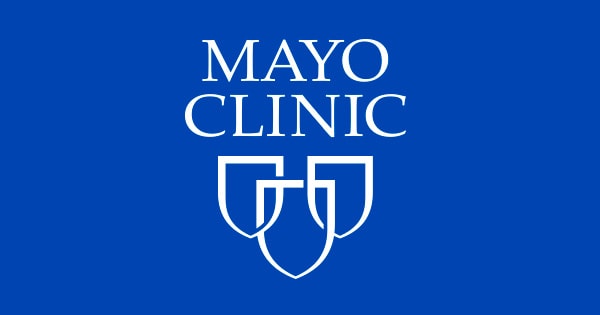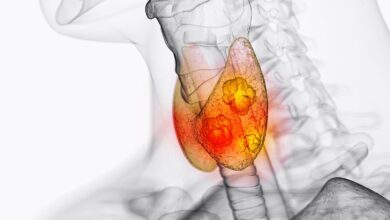Chest pain: First aid

First aid for chest pain depends on the cause. Causes of chest pain can vary. Serious health conditions such as a heart attack or blood clot in the lungs can cause chest pain. Other causes of chest pain include heartburn, pulled muscles and emotional stress.
It can be difficult to tell if chest pain is due to a heart attack or other health condition, especially if you’ve never had chest pain before. Don’t try to diagnose the cause yourself. Get emergency medical help if you have unexplained chest pain that lasts more than a few minutes.
Heart attack
A heart attack generally causes chest pain for more than 15 minutes. The pain may be mild or severe. Some heart attacks happen suddenly. But sometimes warning symptoms happen hours or days in advance.
Heart attack symptoms may include:
- Chest pain that may feel like pressure, tightness, pain, squeezing or aching.
- Pain or discomfort that spreads to the shoulder, arm, back, neck, jaw, teeth or sometimes the upper belly.
- Cold sweat.
- Fatigue.
- Heartburn or indigestion.
- Lightheadedness or sudden dizziness.
- Nausea.
- Shortness of breath.
In women, chest pain is not always severe or even the most noticeable symptom. Women tend to have more-vague symptoms, such as nausea or back or jaw pain. These symptoms may be more intense than the chest pain.
If you or someone else may be having a heart attack, follow these first-aid steps:
- Call 911 or emergency medical help. Don’t ignore the symptoms of a heart attack. If an ambulance or emergency vehicle can’t come to you, have someone drive you to the nearest hospital. Drive yourself only if there are no other options.
- Take aspirin, if recommended. Aspirin helps prevent blood clotting. Taking aspirin during a heart attack may reduce heart damage. Don’t take an aspirin unless a healthcare professional says to do so. Don’t delay calling 911 to take an aspirin. Call for emergency help first.
- Take nitroglycerin, if prescribed. If you think you’re having a heart attack and your healthcare professional has previously prescribed nitroglycerin for you, take it as directed. Don’t take anyone else’s nitroglycerin.
- Start CPR if the person doesn’t have a pulse or isn’t breathing. If you’re untrained in CPR, do hands-only CPR. That means push hard and fast on the person’s chest about 100 to 120 times a minute. If you’re trained in CPR and confident in your ability, start with 30 chest compressions before giving two rescue breaths.
- Use an automated external defibrillator (AED) if one is immediately available and the person is unconscious. The device sends shocks to the heart to reset the heart rhythm. AEDs come with step-by-step voice instructions for their use. They only give a shock when appropriate.
Angina
Angina is chest pain or discomfort caused by reduced blood flow to the heart. It’s relatively common. But it can be hard to tell it apart from other types of chest pain, such as indigestion.
Angina may feel like squeezing, pressure, heaviness, tightness or pain in the chest. It can be stable or unstable.
- Stable angina usually happens during activity and goes away with rest or angina medicine. The pain is predictable and usually similar to previous bouts of chest pain. The chest pain typically lasts a short time, perhaps five minutes or less.
- Unstable angina is unpredictable and occurs at rest. Or the angina pain is worsening and occurs with less activity. It doesn’t go away with rest or the medicine. Unstable angina is dangerous and needs emergency treatment. It may be a sign of a future heart attack.
Get emergency medical help immediately for any new or unexplained chest pain.
Pulmonary embolism
Pulmonary embolism is a blood clot in the lung. It happens when a clot, usually in the leg or pelvis, breaks free and gets stuck in a lung artery. The clot blocks or reduces blood flow. This makes it harder for the lungs to send oxygen to the rest of the body.
Symptoms of pulmonary embolism may include:
- Sudden, sharp chest pain often with shortness of breath.
- Sudden, unexplained shortness of breath, even without pain.
- Cough that may produce blood-streaked spit.
- Rapid heartbeat with shortness of breath.
- Fainting.
- Severe anxiety.
- Unexplained sweating.
- Swelling of one leg only, caused by a blood clot in the leg.
Pulmonary embolism can be life-threatening. Get emergency medical help if you have symptoms of pulmonary embolism.
Aortic dissection
An aortic dissection is a tear in the inner layer of the body’s main artery, called the aorta. Aortic dissection is a life-threatening condition that needs emergency medical treatment.
Typical symptoms include:
- Sudden severe chest or upper back pain, often described as a tearing or ripping sensation, that spreads to the neck or down the back.
- Sudden severe stomach pain.
- Loss of consciousness.
- Shortness of breath.
- Stroke symptoms such as sudden vision problems, difficulty speaking, and weakness or loss of movement on one side of your body.
- Weak pulse in one arm or thigh compared with the other.
- Leg pain.
- Difficulty walking.
These symptoms can be caused by many different health conditions. It’s important to get a quick diagnosis. Early treatment of aortic dissection may help save your life.
Pneumonia with pleurisy
Pneumonia is an infection of the air sacs in the lungs. Symptoms include chest pain, chills, fever, and a cough that may produce bloody or foul-smelling sputum. Pleurisy is inflammation of the tissues that surround the lung. It can cause chest pain when taking a breath or coughing.
Unlike a true heart attack, pleurisy pain is usually relieved temporarily by holding your breath or putting pressure on the painful area of your chest.
If you’ve recently been diagnosed with pneumonia and have symptoms of pleurisy, see a healthcare professional. Pleurisy alone isn’t a medical emergency, but you shouldn’t try to make the diagnosis yourself.
Pericarditis
Pericarditis is swelling and irritation of the thin, saclike tissue surrounding your heart. It causes sharp chest pain. The chest pain gets worse when you cough, lie down or take a deep breath.
Pericarditis is usually mild and goes away without treatment. If it’s severe, you may need medicine or, rarely, surgery.
It may be hard to tell the difference between sudden pericarditis and pain due to a heart attack. If you have sudden, unexplained chest pain, seek emergency medical help.
Chest wall pain
Chest wall pain is a type of muscle pain. Bruised chest muscles may happen from excessive coughing, straining or a minor injury.
One type of chest wall pain is costochondritis. Costochondritis causes pain and tenderness in and around the cartilage that connects the ribs to the breastbone.
If you have costochondritis, pressing on a few points along the edge of your breastbone often triggers considerable tenderness. If gently touching the area with your fingers causes chest pain, it’s unlikely that a serious condition, such as a heart attack, is the cause.
When to see a healthcare professional
Chest pain is a common reason that people seek medical treatment. Anxiety, indigestion, infection, muscle strain, and heart or lung disease can all cause chest pain.
If you have new or unexplained chest pain, see a healthcare professional. If you think you’re having a heart attack, call 911 or your local emergency number. Don’t try to diagnose the chest pain yourself or ignore it. Treatment depends on the specific cause of the pain.
From Mayo Clinic to your inbox
Sign up for free and stay up to date on research advancements, health tips, current health topics, and expertise on managing health. Click here for an email preview.
To provide you with the most relevant and helpful information, and understand which
information is beneficial, we may combine your email and website usage information with
other information we have about you. If you are a Mayo Clinic patient, this could
include protected health information. If we combine this information with your protected
health information, we will treat all of that information as protected health
information and will only use or disclose that information as set forth in our notice of
privacy practices. You may opt-out of email communications at any time by clicking on
the unsubscribe link in the e-mail.
Feb. 17, 2024
- Mason RJ, et al. Chest pain. Murray and Nadel’s Textbook of Respiratory Medicine. 6th ed. Elsevier; 2016. https://www.clinicalkey.com. Accessed March 2, 2021.
- Chest pain. Merck Manual Professional Version. https://www.merckmanuals.com/professional/cardiovascular-disorders/symptoms-of-cardiovascular-disorders/chest-pain. Accessed Jan. 23, 2024.
- Heart attack. National Heart, Lung, and Blood Institute. https://www.nhlbi.nih.gov/health-topics/heart-attack. Accessed Jan. 23, 2024.
- Angina. National Heart, Lung, and Blood Institute. https://www.nhlbi.nih.gov/health-topics/angina. Accessed Jan. 23, 2024.
- Pellegrino JL, et al. 2020 American Heart Association and American Red Cross focused update for first aid. Circulation. 2020; doi:10.1161/CIR.0000000000000900.
- Marx JA, et al., eds. Chest pain. In: Rosen’s Emergency Medicine: Concepts and Clinical Practice. 9th ed. Elsevier; 2018. https://www.clinicalkey.com. Accessed March 2, 2021.
- Venous thromboembolism. National Heart, Lung, and Blood Institute. https://www.nhlbi.nih.gov/health-topics/venous-thromboembolism. Accessed Jan. 23, 2024.
- Lavonas EJ, et al. Highlights of the 2020 AHA guidelines update for CPR and ECC. https://cpr.heart.org/en/resuscitation-science/cpr-and-ecc-guidelines. Accessed Jan. 23, 2024.
- Warning signs of a heart attack. American Heart Association. https://www.heart.org/en/health-topics/heart-attack/warning-signs-of-a-heart-attack. Accessed Jan. 23, 2024.
- Heart attack. Mayo Clinic. https://www.mayoclinic.org/diseases-conditions/heart-attack/symptoms-causes/syc-20373106#symptoms. Accessed Jan. 18, 2024.
.



